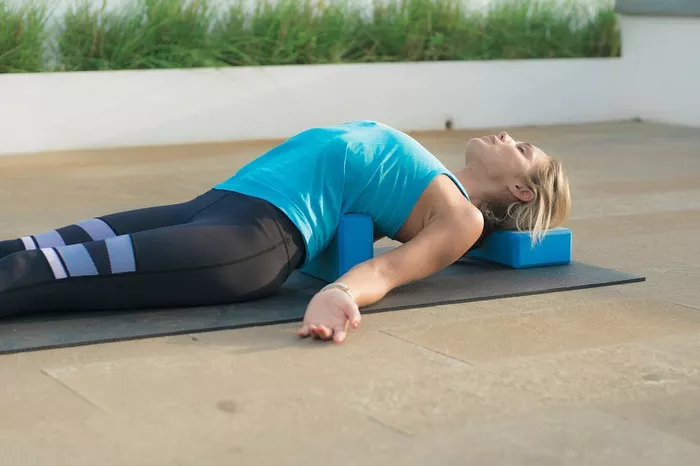Yoga mats come in various sizes, materials, and designs, all of which contribute to their overall weight. Understanding the weight of a yoga mat is important for practitioners who frequently transport their mats to different locations, such as yoga studios, outdoor sessions, or travel destinations. This comprehensive guide explores the factors affecting the weight of a yoga mat, the average weights of different types of mats, and the benefits and drawbacks of lightweight versus heavyweight mats.
Factors Affecting Yoga Mat Weight
Several factors influence the weight of a yoga mat, including material, thickness, size, and design features. Here, we delve into each of these aspects:
1. Material
The material of a yoga mat is one of the primary determinants of its weight. Common materials include:
PVC (Polyvinyl Chloride): PVC mats are durable and provide good cushioning but tend to be heavier. They are often used for traditional yoga mats and can weigh between 3 to 7 pounds.
TPE (Thermoplastic Elastomer): TPE mats are lightweight, environmentally friendly, and offer a good grip. They typically weigh between 2 to 5 pounds.
Natural Rubber: Rubber mats provide excellent traction and cushioning but are heavier than synthetic alternatives. They generally weigh between 4 to 6 pounds.
Cotton and Jute: These natural fiber mats are lightweight and eco-friendly, with weights ranging from 2 to 4 pounds. However, they may not offer as much cushioning as synthetic materials.
Microfiber and Suede: Used in travel and hybrid mats, these materials are lightweight and can be folded, with weights often around 1 to 3 pounds.
2. Thickness
The thickness of a yoga mat also significantly impacts its weight. Mats typically range from 1/16 inch to 1/4 inch in thickness. Thicker mats offer more cushioning but are heavier. Here’s a breakdown:
Travel Mats (1/16 inch): These are ultra-thin and lightweight, ideal for portability, and usually weigh around 1 to 2 pounds.
Standard Mats (1/8 inch): Commonly used for general practice, these mats provide a balance of cushioning and weight, ranging from 2 to 4 pounds.
Thick Mats (1/4 inch): These mats offer maximum cushioning and support, making them heavier, with weights typically between 4 to 7 pounds.
3. Size
The dimensions of a yoga mat—length and width—affect its weight. Standard mats measure about 68 inches long and 24 inches wide. However, there are larger options:
Extra-Long Mats: For taller individuals, these mats can extend up to 84 inches in length, adding extra weight.
Extra-Wide Mats: Wider mats provide more space for movement but also increase the mat’s weight.
4. Design Features
Additional features such as textured surfaces for better grip, alignment markers, and integrated carrying straps can add to the weight of a yoga mat. While these features enhance the mat’s functionality, they may make it heavier and less convenient to transport.
Average Weights of Different Types of Yoga Mats
Yoga mats come in various styles tailored to specific needs, each with a typical weight range:
1. Standard Yoga Mats
Standard mats, suitable for most yoga practices, weigh between 2 to 5 pounds. They offer a good balance of cushioning, durability, and portability.
2. Travel Yoga Mats
Travel mats are designed for portability and are made from lightweight materials. These mats weigh between 1 to 3 pounds and can be easily folded or rolled into compact sizes for convenient transportation.
3. Heavy-Duty Yoga Mats
Heavy-duty mats are thicker and made from dense materials to provide maximum cushioning and durability. They typically weigh between 4 to 7 pounds and are ideal for practitioners needing extra support for their joints.
4. Eco-Friendly Yoga Mats
Eco-friendly mats made from natural materials like rubber, jute, and cotton weigh between 2 to 6 pounds. They balance sustainability with functionality and often have varying weights based on their thickness and material density.
Benefits and Drawbacks of Lightweight vs. Heavyweight Yoga Mats
The choice between a lightweight and heavyweight yoga mat depends on individual preferences and specific needs. Here, we explore the advantages and disadvantages of each:
Lightweight Yoga Mats
Benefits:
- Portability: Lightweight mats are easier to carry, making them ideal for those who travel frequently or attend classes in different locations.
- Convenience: These mats are easier to roll up, store, and transport.
- Versatility: Suitable for a variety of practices, including travel yoga and hot yoga, where practitioners might need to move their mats often.
Drawbacks:
- Less Cushioning: Lightweight mats, especially travel mats, offer less cushioning, which may not be suitable for those with joint issues or who prefer more comfort during practice.
- Durability: They may wear out faster due to their thinner and lighter materials.
Heavyweight Yoga Mats
Benefits:
- Cushioning and Support: Heavyweight mats provide excellent cushioning, making them ideal for practitioners with joint concerns or those who prefer more comfort.
- Stability: The extra weight adds stability, ensuring the mat stays in place during vigorous practices.
- Durability: Made from denser materials, these mats are often more durable and can withstand intensive use.
Drawbacks:
- Portability: The heavier weight makes these mats less convenient to carry, especially for those who commute or travel frequently.
- Storage: They can be bulkier and harder to store, requiring more space.
Choosing the Right Yoga Mat for Your Needs
Selecting the right yoga mat involves considering various factors, including your practice style, frequency, and personal preferences. Here are some tips to help you choose the perfect mat:
1. Identify Your Practice Style
Different yoga styles may require different mat features:
- Vinyasa and Ashtanga: These dynamic practices involve a lot of movement, so a mat with good grip and stability is essential. Consider a standard or heavyweight mat.
- Yin and Restorative: These practices require longer holds and more comfort, making thicker, heavyweight mats ideal.
- Travel Yoga: For yogis on the go, a lightweight travel mat is a practical choice.
- Hot Yoga: Mats with good grip and moisture-wicking properties, often made from rubber or TPE, are suitable.
2. Consider Your Comfort and Support Needs
If you have joint issues or prefer extra cushioning, opt for a thicker mat. However, if you prioritize portability, a thinner, lightweight mat may be more appropriate.
3. Evaluate Durability and Material
Consider the material based on durability, eco-friendliness, and maintenance. Natural rubber and TPE are durable and offer good grip, while PVC mats are highly durable but may not be as eco-friendly.
See Also: How to Make a Yoga Mat: A Step-by-Step Guide
4. Test Before Buying
If possible, test different mats to find the one that feels most comfortable and supportive for your practice. Many yoga studios and stores allow customers to try mats before purchasing.
Conclusion
The weight of a yoga mat varies based on several factors, including material, thickness, size, and design features. Lightweight mats are ideal for portability and convenience, while heavyweight mats offer superior cushioning and durability. Understanding your practice style, comfort needs, and preferences will help you choose the right mat for a fulfilling and enjoyable yoga experience. Whether you prioritize portability or comfort, there is a yoga mat out there that perfectly suits your needs.
Related topics:





















